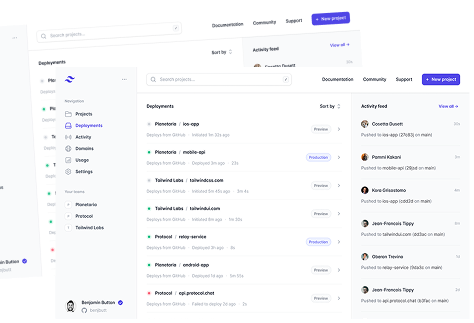Writing a board memo might sound straightforward, but it can be tricky to convey the right information in the right way. Whether you're updating the board on a project's status, proposing a new initiative, or sharing critical updates, how you communicate can make all the difference. Let's look at how to craft a board memo that hits the mark, with plenty of practical tips and real-world examples to guide you.
Why Writing a Board Memo Matters
When you're tasked with writing a board memo, it's important to remember that this isn't just about passing on information. It's about communication that influences decision-making at the highest level of an organization. A well-crafted memo can clarify complex issues, highlight opportunities, and build confidence in your leadership. On the flip side, a poorly written memo might leave board members scratching their heads or, worse, doubting the proposed actions.
Setting the Right Tone
Tone is crucial in a board memo. You want to maintain a professional and respectful tone that matches the formality of the audience. But don't let that intimidate you; think of it as crafting a message for a group of engaged, intelligent people who have a vested interest in your topic.
- Be Direct: Get straight to the point. Board members are busy, and they appreciate brevity.
- Stay Neutral: Keep an objective tone, especially when dealing with sensitive topics.
- Use Professional Language: Avoid slang or overly casual language, but don't overwhelm with jargon.
Example:
Subject: Quarterly Financial Performance Update
Dear Board Members,
I would like to present our financial performance for Q3 2023. We have achieved a 15% increase in revenue, driven by strong sales in our new product line. However, we also experienced challenges in the supply chain, impacting profitability.
Structuring Your Memo
Like any good piece of writing, a board memo benefits from a clear structure. This helps readers follow your narrative and grasp your key points quickly. Here's a simple structure to consider:
- Subject Line: Clear and concise, indicating the memo's purpose.
- Introduction: Briefly state the purpose of the memo.
- Body: Present your information in a logical order, using subheadings if necessary.
- Conclusion: Summarize your main points and suggest next steps.
- Attachments: Note any additional documents or data included.
Crafting a Strong Introduction
Your introduction sets the stage. It should clearly state the memo's purpose and what you hope to achieve. This is your chance to grab attention and set expectations.
- State the Purpose: Why are you writing this memo? What's the main issue or topic?
- Highlight the Importance: Briefly explain why this topic matters to the board.
- Outline the Structure: Let readers know what to expect in the following sections.
Example:
Dear Board Members,
The purpose of this memo is to update you on the progress of our sustainability initiatives. As environmental responsibility becomes increasingly vital to our stakeholders, it is crucial to review our current efforts and future plans.
Developing the Body of the Memo
The body of your memo is where you dive into the details. This is the heart of your message, so take the time to organize your thoughts and present them logically.
- Use Clear Subheadings: Break down the content into digestible sections.
- Include Data and Evidence: Back up your points with relevant data or research.
- Be Concise: Avoid unnecessary details that might distract from your main message.
Example Structure:
1. Overview of Current Initiatives
2. Recent Achievements
3. Challenges and Areas for Improvement
4. Future Plans
Using Data Effectively
Data can be a powerful tool in a board memo, providing evidence to support your arguments. But it's vital to present it in a way that's easy to understand.
- Graphs and Tables: Visual aids can help convey complex information quickly.
- Summarize Key Points: Highlight the most important data points rather than overwhelming readers with numbers.
Example:
As illustrated in the attached chart, our carbon emissions have decreased by 20% over the past year. This reduction is primarily due to increased energy efficiency in our manufacturing processes.
Writing a Persuasive Argument
Sometimes, a board memo needs to persuade the board to take action or approve a proposal. In these cases, your writing must be compelling and logical.
- Build a Case: Start with your main argument and build on it with evidence.
- Address Counterarguments: Acknowledge potential objections and address them.
- Call to Action: Clearly state what you want the board to do next.
Example:
To maintain our competitive edge, I recommend investing in new technology to further reduce our environmental footprint. While this requires an initial capital investment, the long-term savings and reputational benefits justify the expense.
Avoiding Common Mistakes
Even experienced writers can make mistakes. Here are some pitfalls to watch out for:
- Being Too Vague: Specificity is key. Avoid general statements without evidence.
- Overloading with Information: Stick to the essential points to keep your memo focused.
- Neglecting the Audience: Remember who you're writing for and tailor your message accordingly.
Reviewing and Editing
Before you hit send, take the time to review and polish your memo. A well-edited document reflects professionalism and attention to detail.
- Check for Clarity: Ensure your message is clear and easy to follow.
- Proofread for Errors: Look for spelling and grammatical mistakes.
- Seek Feedback: If possible, have a colleague review your memo for clarity and tone.
Sample Memo in Action
Let's see how these elements come together in a sample memo:
Subject: Proposal for New Employee Training Program
Dear Board Members,
The purpose of this memo is to propose the implementation of a new employee training program to enhance team productivity and morale. With the rapid changes in our industry, continuous learning is essential for maintaining our competitive advantage.
Current Training Status
Currently, our training programs focus primarily on onboarding. While effective, they do not address ongoing development needs.
Proposed Training Program
The proposed program will include monthly workshops, online courses, and mentorship opportunities, tailored to individual roles and career paths.
Expected Benefits
Implementing this program is expected to increase employee satisfaction and retention, as well as improve overall performance.
Next Steps
I recommend we allocate budget for this initiative and begin piloting the program in Q1 2024.
Thank you for considering this proposal. I look forward to your feedback.
Best regards,
[Your Name]
Tools to Enhance Your Board Memo
Writing a board memo doesn't have to be daunting. With tools like Spell, you can streamline the process. Spell helps you draft, edit, and format your memos quickly, ensuring they're polished and professional. You can even use AI to generate a first draft, saving you time to focus on refining your message.
Final Thoughts
Writing a board memo that resonates requires clear communication, a solid structure, and a keen understanding of your audience. Remember to keep it concise, back up your points with data, and maintain a professional tone. And if you're looking for a way to simplify the process, Spell is here to help you create your memos faster and with greater ease.











